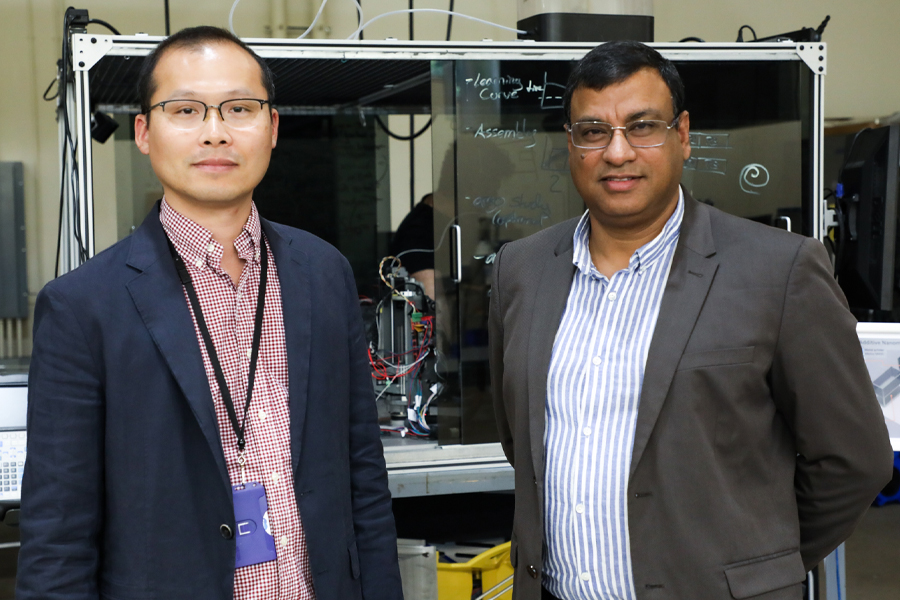
Researchers from the FAMU-FSU College of Engineering and the Florida State University Department of Statistics are teaming up in a National Science Foundation-funded study that could help people perform better in manufacturing and other industries that rely on humans.
Chiwoo Park, an associate professor in the FAMU-FSU College of Engineering, and Anuj Srivastava, a professor in the Department of Statistics in FSU's College of Arts and Sciences, are developing a motion-and-time analysis to measure the various motions of the human body during work. The NSF is funding the $375,425 study.
Human performance varies because of many factors, including an individual's training level, errors and fatigue. Through this research, the team hopes to create standardized work practices and identify optimal ways for people to perform tasks.
Park and Srivastava published previous research on this subject in Operations Research, and their NSF study will build on that work by using artificial intelligence to collect measurements faster and more accurately than manual methods.
"Motion-and-time-analysis traditionally involves many labor-intensive steps such as timing with stopwatches and manual data analysis," Park said. "We want to exploit modern motion sensor technology and artificial intelligence to automate these manual steps so that the analysis can be performed on a regular basis for process analysis and improvement."
Data analysis for human operations is critical in applications such as ergonomics, health care and service industries that involve repetitive manual tasks. Grocery stores, theme parks, factories, offices and hospitals are just some of the workplaces where improved analysis could make an impact.
Analyzing the shapes that make up a person's body is difficult because the camera angle, image quality and other clutter in the scene can complicate data capture. Different people have different styles of movement, gait patterns and paces of work that must be factored into analysis.
"We are developing statistical techniques that help capture typical motion patterns and relate them to industrial performance metrics," Srivastava said. "Interdisciplinary collaborations such as this are driving the latest innovations in scientific research and data science, so it is exciting to have this opportunity."






